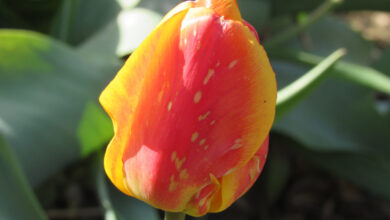Lilacs

Spring is here, and soon it will be time for lilacs. The popular shrub is not native to North America, but it has been planted here for the enjoyment of its beautiful flowers and amazing scent since the 1750s. Common lilacs – Syringa vulgaris – are native to Eastern Europe. Another popular species is Syringa patula, which is native to Asia.
While it is true lilacs lack year-round interest, their displays of white, pink, violet, blue, magenta, lilac, and purple blooms in mid-to-late spring are a welcome sight after a long winter.
Lilacs are very hardy and are adapted to USDA Hardiness zones 3-5. They do best in a sunny site with good air circulation. I like to grow them near the house so I can enjoy their fragrance even when I am inside. Iowa State University Extension notes that lilacs need four to six hours of sunlight each day for best flower production. They will tolerate a wide range of soil conditions but do best in moist, well-drained soils. Space the shrubs 10 to 15 feet apart for specimen displays and five to eight feet apart if you want to create a hedge.
Regarding deadheading spent flowers – it is not absolutely necessary that you do so. The shrubs will bloom the following year even if they have not been deadheaded. It is not uncommon to see old lilacs blooming with abandon in a spot near where a farmhouse once stood. The spent flowers are not attractive, however. If you can reach them and have the time, deadheading can improve the appearance of the shrub and help it put its energy into next year’s flower bud production. This can result in a heavier bloom the following year. If you deadhead your lilacs, make your cut at the base of the flower cluster and just above the uppermost leaves.
Lilacs are suckering shrubs, Iowa State University Extension explains, and they can benefit from pruning. The plants will set their flower buds for the following season in mid-summer – not too long after the spring blooms fade. The best time to prune is immediately after flowering to help encourage the most flowers in the following year and prevent pruning the buds after they are set. Remove select branches at their point of origin or entire branches from the base of the suckering shrub rather than with shearing or clipping, Iowa State University advises. This preserves the natural shape and helps promote new growth that will produce better blooms than old stems. Remove the oldest and largest branches every three to five years to keep the shrub rejuvenated.
It is not necessary to fertilize lilacs, in fact, heavy fertilization can result in excessive vegetative growth and suppress flowering.
Remember that when planting common lilacs, it can take as many as five or more years for a shrub to begin blooming. They need time to grow and become established before they are able to flower.
The dwarf Korean lilac ‘Miss Kim’ can flower within one or two years of planting. ‘Miss Kim’ flowers profusely with intensely scented blooms slightly later than common lilacs, which can help extend your season. I find that their bloom time is shorter, however, especially if early June temperatures are hot.
Overall, lilacs are easy to grow and have few pest and disease problems. Most are subject to powdery mildew, a fungal disease that looks like white, dusty growth on the leaves. Common lilacs are highly susceptible, while Preston lilacs and dwarf Korean lilacs are resistant. Powdery mildew is not attractive, but it does not cause serious harm to the plant. Iowa State University says spraying with a fungicide is not warranted. Planting in a sunny location will help with powdery mildew and also encourage lots of flowers.




